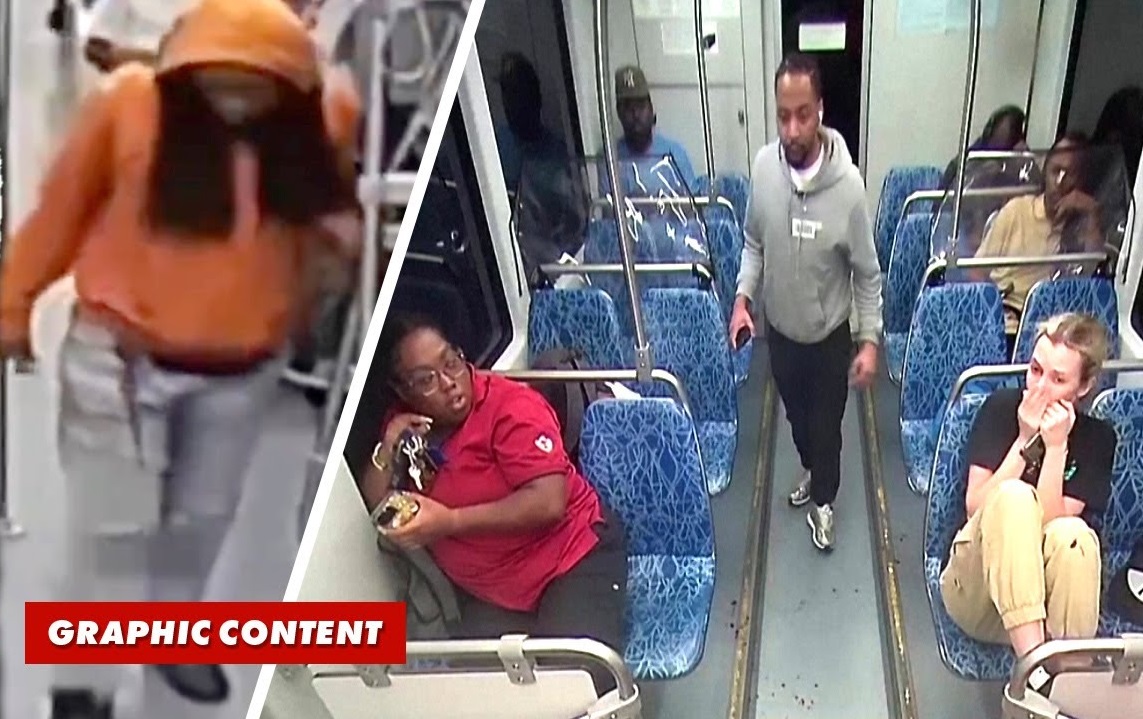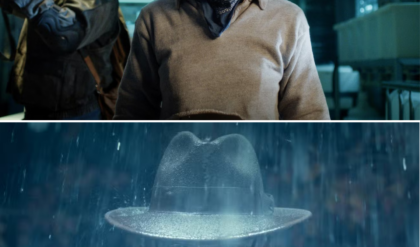💔 Iryna Zarutska fled war for safety, only to be taken on a Charlotte train. New footage shows a tragic moment—bystanders frozen, and the suspect saying, “I got that white girl.” 😢 Why was he free despite warning signs? Let’s honor Iryna by seeking answers and safer communities. Share your thoughts and read more. 👇

Iryna Zarutska’s story is one of hope turned to heartbreak. A 23-year-old Ukrainian refugee, she fled the war in her homeland to build a new life in Charlotte, North Carolina. On August 22, 2025, she boarded a light rail train after work, unaware that minutes later, she would become the victim of a brutal, unprovoked attack. Surveillance footage released by the Charlotte Area Transit System (CATS) on September 6 captures the chilling scene: a man stabs Iryna as passengers scatter or film, and after the attack, he allegedly says, “I got that white girl.” The suspect, Decarlos Brown Jr., was arrested, but the video and his words have sparked outrage, raising questions about bystander inaction, systemic failures, and why some stories seem to linger in the shadows. Iryna’s death is a tragedy that calls for reflection and change.
A Life of Resilience
Iryna was a dreamer with a radiant spirit. Born in Kyiv, she graduated from Synergy College with a degree in art and restoration, creating sculptures and eclectic clothing that showcased her creativity. When Russia invaded Ukraine in 2022, she and her family—mother Anna, sister, and brother—sought refuge in Charlotte. There, Iryna thrived, mastering English, enrolling at Rowan-Cabarrus Community College, and working at Zepeddie’s Pizzeria. Her love for animals drove her dream of becoming a veterinary assistant, and she often walked neighbors’ pets, earning love for her kindness. “She was a light in every room,” a family friend named Lonnie told CNN affiliate WCNC, noting the irony of her escaping war only to face violence in America.
On that August evening, Iryna boarded the Lynx Blue Line at the East/West Boulevard station, wearing her work uniform and AirPods, scrolling through her phone. Surveillance footage shows her sitting in front of Decarlos Brown Jr., a 34-year-old man in a red hoodie. Four minutes later, without any interaction, Brown pulled a pocketknife and stabbed her three times, including a fatal wound to the neck. As Iryna collapsed, one passenger in a green shirt tried to stop the bleeding with his clothing, but others fled or filmed the scene, a detail that has fueled public anger. Brown walked to the other end of the train, removed his hoodie, and exited at the next stop, where police arrested him after noticing a cut on his hand. Iryna was pronounced dead at 10:05 p.m., leaving a community in shock.
A Troubled Suspect
Decarlos Brown Jr.’s life was marked by struggle. With 14 arrests since 2007 for offenses like armed robbery, felony larceny, and assault, he served over five years in prison, released in 2020. Diagnosed with schizophrenia, Brown was homeless and plagued by delusions, believing a government microchip controlled his actions. His mother, Michelle Dewitt, told WSOC-TV she tried to secure an involuntary commitment order but was denied because she wasn’t his legal guardian. His sister, Tracey, told CNN he assaulted her in 2022, though she dropped charges out of concern for his mental health. In January 2025, Brown was arrested for misusing 911, claiming “man-made materials” were in his body. A public defender raised mental health concerns in July, leading to a court-ordered evaluation, but Magistrate Judge Teresa Stokes released him without bail—a decision now at the center of the controversy.
The surveillance footage, as reported by Wikipedia and YouTube sources, captures Brown saying, “I got that white girl. I got that white girl,” after the attack. This quote, while unconfirmed by police as evidence of a racial motive, has sparked heated debate. In a jailhouse call to his sister, shared with the Daily Mail, Brown claimed Iryna was “reading his mind,” tying the attack to his paranoid delusions rather than race. He faces first-degree murder and a federal charge for causing death on a mass transportation system, with a potential death penalty pending a 60-day mental health evaluation.
The Bystander Debate
The footage’s depiction of bystander inaction has struck a deep chord. While one passenger tried to save Iryna, others’ failure to intervene—filming or fleeing—has been called a modern “bystander effect.” Social media posts on X, like those from The Gateway Pundit, decried this as a sign of societal desensitization, with users questioning why more didn’t act. The passenger in the green shirt, who used his clothing to try to stop the bleeding, shows not all were passive, though his efforts couldn’t save Iryna. This has sparked broader discussions about how we respond to crises in public spaces and the impact of filming tragedies for social media.
Systemic Failures and Media Scrutiny
The case has exposed glaring systemic issues. Conservative figures like President Trump and Attorney General Pamela Bondi have blamed “soft-on-crime” policies in Democratic-led Charlotte, pointing to Brown’s release in July despite his history. Trump called Brown a “madman,” while Bondi vowed to seek the maximum penalty. Charlotte Mayor Vi Lyles admitted the killing was a “tragic failure” of the courts, announcing plans for more transit security, including officers and fare checks, as Brown was fare-jumping. Mecklenburg County District Attorney Spencer Merriweather cited resource constraints, with 85 prosecutors handling nearly 300 homicide cases, highlighting systemic strain.
The claim that major media outlets ignored the story has fueled accusations of bias. Outlets like The Gateway Pundit and Daily Mail noted that liberal media—CNN, The New York Times—initially skipped coverage, possibly due to Brown’s race or to shield Democratic policies. CNN and others later reported extensively, focusing on mental health and judicial reform, but the delay amplified conservative narratives. Mayor Lyles thanked media for not sharing the graphic footage out of respect for Iryna’s family, though CATS released it first, sparking debate about its viral spread on X, where it garnered over 200,000 views.
A Community’s Loss
Iryna’s death has left a void in Charlotte and beyond. Her boyfriend, Stanislav “Stas” Nikulytsi, told the New York Post she was his “everything,” his grief matched by anger at the judicial system. Her family, already scarred by war, buried her in Charlotte, where her grave, adorned with mushroom stickers, reflects her artistic soul. A GoFundMe raised nearly $75,000 for funeral costs, and vigils on August 31 and September 22 honored her. Zepeddie’s Pizzeria keeps a candle lit, while scholarships are planned for refugee students pursuing veterinary studies.
The Ukrainian community and Charlotte residents have rallied around her family, with Ukraine’s Ministry of Foreign Affairs expressing shock at her loss. Her aunt, Valeria Haskell, told the Daily Mail of the family’s exhaustion, with Iryna’s father serving in Ukraine’s military.
A Call for Change
Iryna’s story is a stark reminder of systemic failures—from a judicial system that freed a troubled man to a mental health system that couldn’t help him. The footage and Brown’s haunting words, “I got that white girl,” demand we confront these issues without letting division overshadow Iryna’s life. As Brown awaits trial, her legacy calls for safer public spaces, better mental health care, and a commitment to protect those who seek refuge in America. Her dreams, though stolen, inspire a fight for a future where no one else suffers such a fate.





